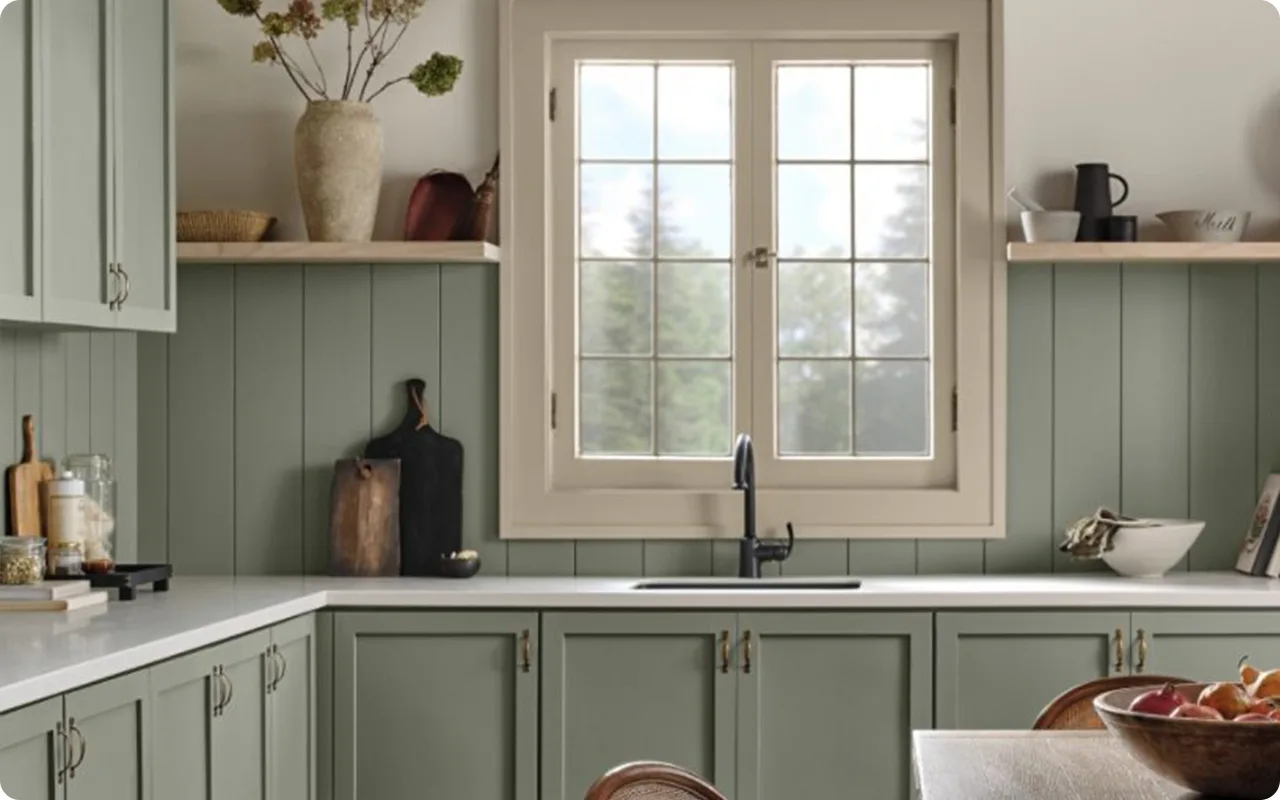After way too many sample pots and a lot of “eh, not quite” moments, I finally found the best sage green paint colors Sherwin Williams has to offer.
These are the shades that don’t just look good on a swatch—they actually work in real homes, with real lighting, and real furniture.
Some lean a bit more gray, others pick up a hint of blue or beige, but they all keep that earthy, calming feel that makes sage green such a favorite.
Whether you’re painting a kitchen, bedroom, or your entire living room, these 17 Sherwin Williams sage greens are worth considering.
And don’t worry—I’ll walk you through what makes each one special (and which ones surprised me the most).
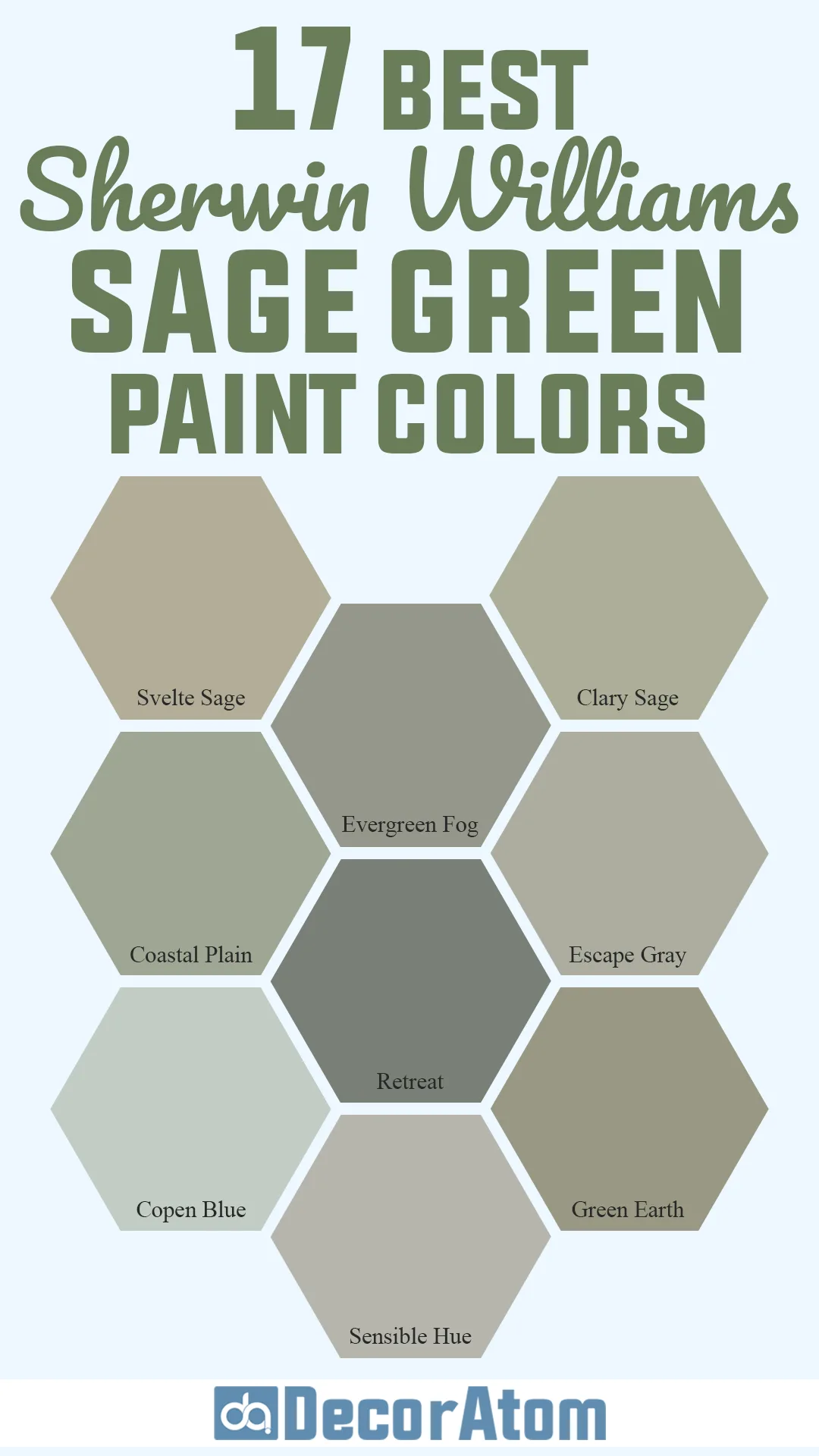
What are Sage Green Paint Colors?
Sage green paint colors live in that sweet spot between muted green and soft gray, creating a calm, natural, and incredibly versatile hue.
What sets sage apart from other greens is its dusty, toned-down quality.
It’s not a loud or overly vibrant green—think of it as a more grounded, weathered version of olive or eucalyptus.
Most sage greens have gray undertones, and some lean slightly into brown or blue territory, depending on the shade.
Sherwin Williams offers a beautiful range of sage greens, from light and airy to rich and earthy.
These colors are inspired by nature—think of the softness of dried herbs, mossy stones, and wild plants.
That grounded, organic feel is what makes sage green so appealing.

Where to Use Sage Green Paint Colors
Sage green is one of those rare colors that feels right just about anywhere.
Because of its muted, soothing nature, it doesn’t overwhelm a room—it supports it. Here are some favorite places to use sage green:
1. Living Rooms
Sage green walls bring a cozy, calming energy to living spaces. It pairs beautifully with neutral furniture and adds a subtle sense of nature indoors without feeling too bold.
2. Bedrooms
Because sage green is known for its restful, tranquil vibes, it’s perfect for bedrooms. It creates a peaceful backdrop that’s easy to layer with crisp whites, soft grays, or warm wood tones.
3. Kitchens & Cabinets
More and more people are embracing sage green kitchen cabinets, and honestly, I’m here for it. It adds a fresh, modern spin on traditional green without feeling trendy. Whether it’s on lower cabinets, a pantry door, or an island, sage green makes a stylish statement.
4. Bathrooms
In a bathroom, sage green creates a spa-like retreat. Pair it with white tile, brass or matte black fixtures, and soft towels for a serene, clean feel.
5. Entryways & Hallways
If you’re looking to add just a touch of color to transitional spaces, sage green is a great pick. It’s soft enough to act like a neutral, yet adds just enough visual interest.
6. Exteriors
Yes, sage green works outside too! It pairs beautifully with stone, wood, and white trim, making it a great choice for craftsman, cottage, or farmhouse-style homes.
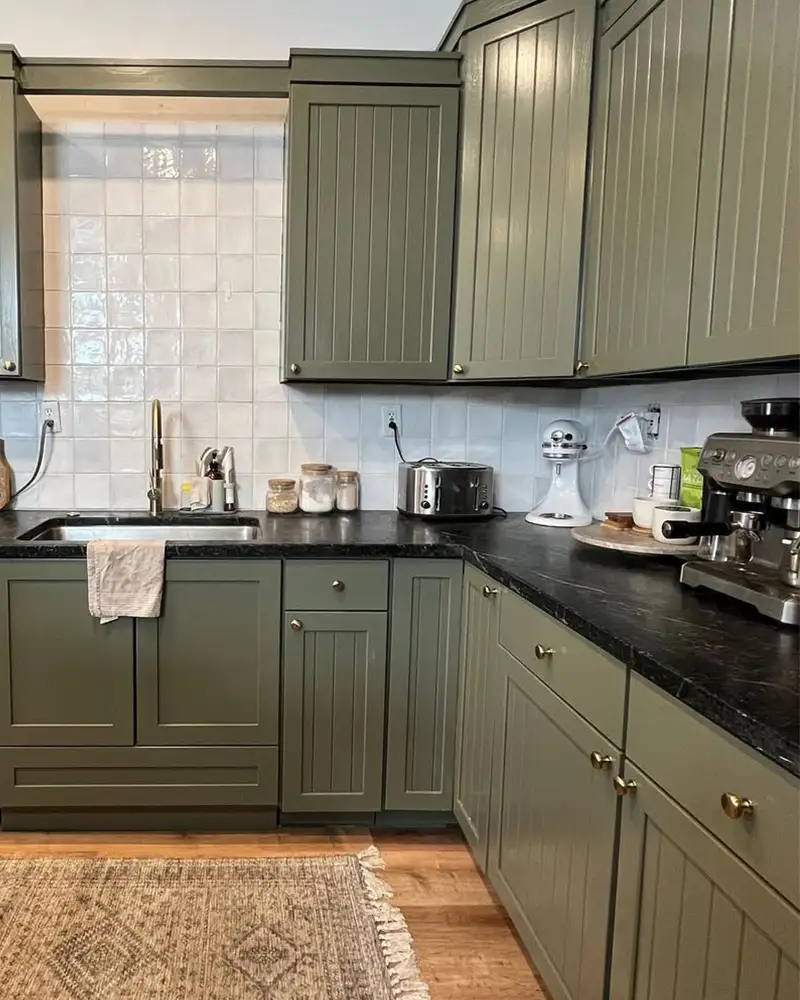
💥🎁 Christmas & Year-End Deals On Amazon !
Don't miss out on the best discounts and top-rated products available right now!
*As an Amazon Associate, I earn from qualifying purchases.
Colors to Pair with Sage Green
One of the best things about sage green is how versatile it is when it comes to pairing with other colors.
Because it walks the line between green, gray, and sometimes brown or blue, you’ve got a lot of flexibility. Here are some ideas:
1. Crisp Whites
Bright whites like Sherwin Williams Pure White or Extra White bring a fresh contrast to sage green, helping it pop while keeping the overall palette light and clean.
2. Soft Beiges & Creams
Warm neutrals like Shoji White or Alabaster add softness and warmth when paired with sage green. This combo feels especially cozy in living rooms and bedrooms.
3. Warm Wood Tones
Natural wood, especially with warm or mid-tone finishes, looks beautiful with sage green. The green brings out the richness of the wood and vice versa.
4. Brass or Gold Accents
Sage green paired with gold hardware or light fixtures is a dream. The warmth of brass brings out the subtle earthy tones in the green.
5. Deep Charcoal or Black
For contrast and drama, deep gray or black trim, doors, or furniture gives sage green a modern edge.
6. Muted Blues or Soft Terracotta
Want to bring a little more color into the mix? Try pairing sage green with a dusty blue or a warm clay or terracotta shade. These combinations feel organic and stylish without clashing.
The Best Sherwin Williams Sage Green Paint Colors
Here are my favorite Sage Green paint colors from Sherwin Williams.
1. Svelte Sage

Svelte Sage is a soft, muted green that leans ever so slightly warm. What makes this color truly special is the subtle infusion of brown and gray undertones beneath its gentle green surface.
It has an LRV (Light Reflectance Value) of 41, which puts it comfortably in the medium range—neither too light nor too dark, making it incredibly versatile.
There’s something so grounded and comforting about Svelte Sage. It doesn’t shout for attention, but it has a quiet charm that makes a room feel peaceful and well-balanced.
If you’re looking for a sage green that feels a little more earthy and a touch more neutral, this one hits the mark.
It works beautifully in living rooms, kitchens, or even exteriors.
Honestly, it’s hard to go wrong with it—it’s one of Sherwin Williams’ most loved sage tones for a reason.
2. Evergreen Fog

Evergreen Fog had its moment in the spotlight as Sherwin Williams’ Color of the Year for 2022—and for good reason.
It’s a moody, elegant sage green with a soft gray backbone and just a whisper of blue that gives it a cool, sophisticated edge.
With an LRV of 30, it leans a bit deeper and more dramatic than some of the others on this list, but that’s exactly why people fall in love with it.
This color has depth and presence, but it never feels overwhelming. It’s the kind of shade that can transform a room without needing much else.
I especially love it in bedrooms and offices, where it creates a calm, focused atmosphere. It’s also stunning on kitchen cabinets if you’re after a rich, modern twist on traditional green.
3. Clary Sage

💥🎁 Christmas & Year-End Deals On Amazon !
Don't miss out on the best discounts and top-rated products available right now!
*As an Amazon Associate, I earn from qualifying purchases.
Clary Sage is such a cozy, welcoming color. It leans more into the warm side of sage, and it has a softness that instantly makes a room feel more relaxed.
It shares some visual DNA with Benjamin Moore’s Oil Cloth, though Clary Sage feels just a little lighter and more breathable.
Its LRV is 41, giving it good versatility for most lighting situations.
This is a great option if you want your space to feel inviting but still grounded in nature. It pairs really well with creamy whites and warm wood accents.
There’s a quiet maturity to it—like it’s been there for years, yet it still feels current. Whether on walls, built-ins, or even a front door, Clary Sage brings calm energy to the spaces it touches.
4. Coastal Plain

Coastal Plain feels like a breath of fresh, salty air. It’s a sage green with an ever-so-subtle blue cast, which gives it that soft sea-glass vibe.
With an LRV of 37, it sits in a comfortable mid-tone range—light enough to feel fresh, but with enough weight to make an impact.
There’s something about this color that reminds me of early morning walks on the beach. It feels peaceful, airy, and just a little bit romantic.
It’s ideal for bedrooms, bathrooms, and anywhere you want to create a laid-back, coastal-inspired retreat.
5. Retreat

If you want a sage green with serious mood and drama, Retreat might just be your perfect match. This is one of the darker sage tones on the list, with an LRV of 21.
It’s rich and deeply saturated, with a beautiful blend of green and gray that gives it depth and dimension.
What I love about Retreat is how refined it feels—it has a quiet strength to it. This isn’t your everyday soft green; this is a shade that commands attention without being flashy.
It’s perfect for accent walls, kitchen cabinets, or even a bold powder room.
6. Acacia Haze

💥🎁 Christmas & Year-End Deals On Amazon !
Don't miss out on the best discounts and top-rated products available right now!
*As an Amazon Associate, I earn from qualifying purchases.
Acacia Haze is one of those sage greens that shifts depending on the light in your space. In bright natural light, it looks like a fresh herbal green.
In lower light, the gray undertones become more pronounced, making it feel calm and slightly cool. It has an LRV of 32, so it’s not too dark, but definitely has some visual weight to it.
There’s a softness to Acacia Haze that makes it feel restful and cozy, which is why I love it in bedrooms or living rooms.
It’s also a lovely option for exteriors if you want a green that blends beautifully with natural surroundings.
7. Escape Gray
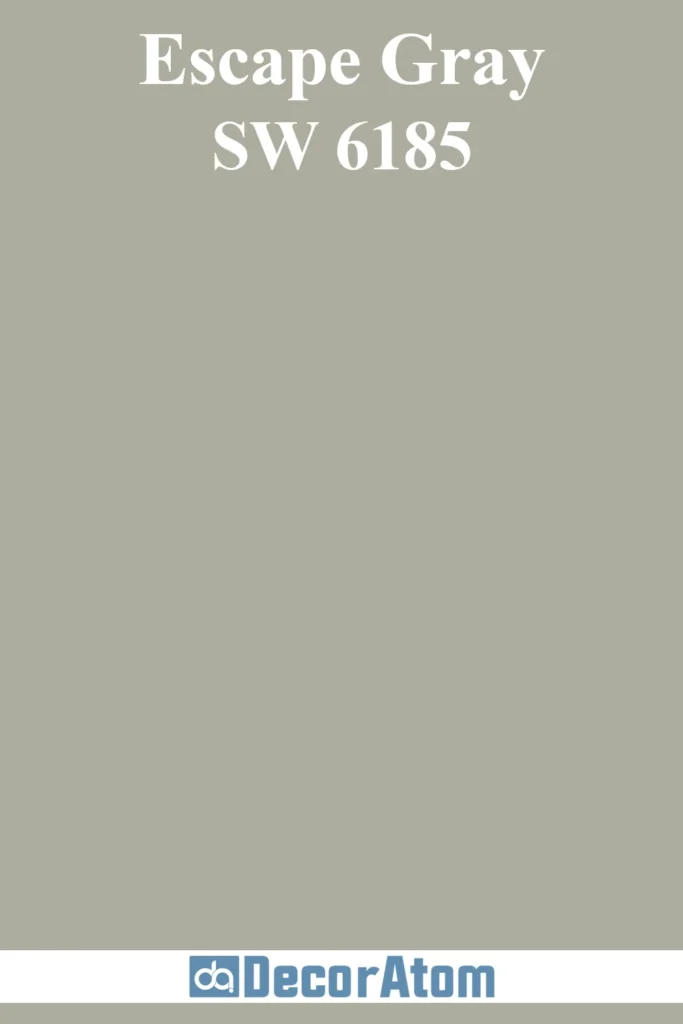
Escape Gray lives right on the edge between sage green and soft gray, which is what makes it such a flexible and appealing choice.
With an LRV of 41, it’s easy to use in just about any room. It doesn’t lean overly warm or overly cool, which makes it feel balanced and timeless.
This is the kind of color that makes a room feel fresh and clean without screaming “green.” It’s especially nice in bedrooms, nurseries, or hallways where you want a touch of color but don’t want to go too bold.
8. Geyser Steam
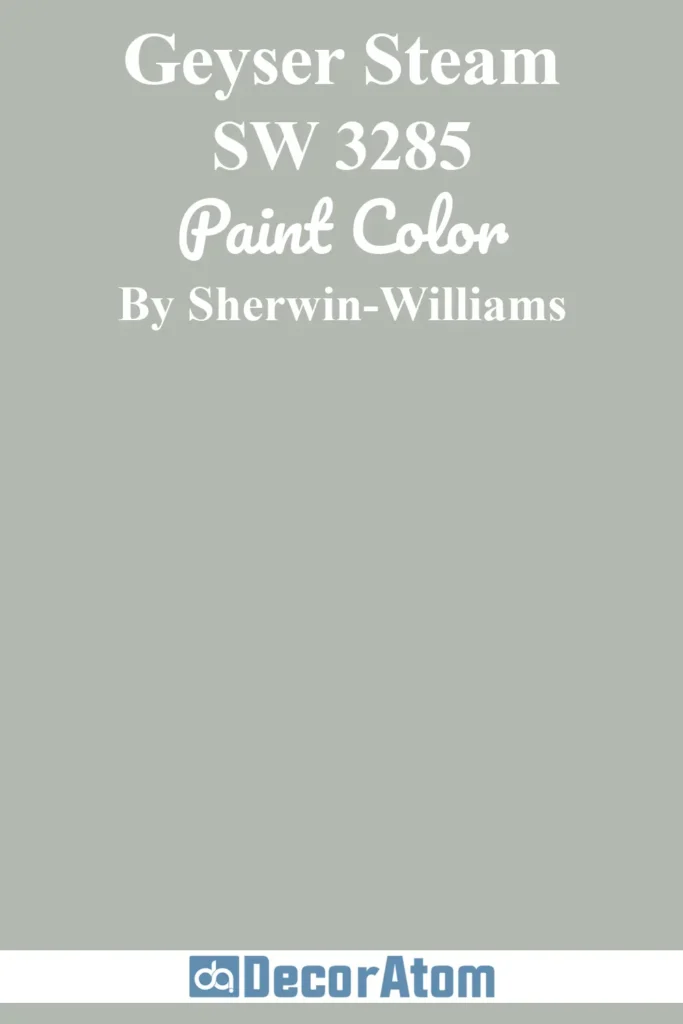
Geyser Steam is a lighter sage green that brings in just a hint of blue, giving it a gentle, almost spa-like quality.
It’s airy without being stark and muted without feeling drab. While it’s not the deepest sage on the list, its softness makes it incredibly approachable.
I’d recommend Geyser Steam for spaces where you want light, openness, and a touch of calm—think bathrooms, laundry rooms, or a peaceful bedroom.
It looks amazing with white trim, pale woods, and brass or brushed nickel accents.
9. Rosemary
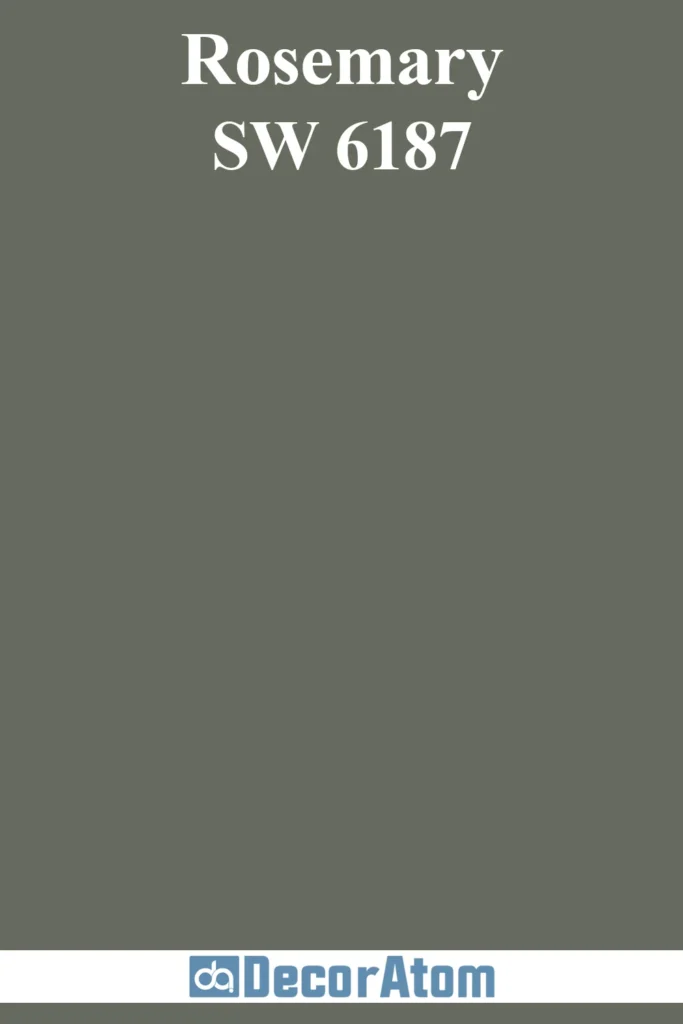
💥🎁 Christmas & Year-End Deals On Amazon !
Don't miss out on the best discounts and top-rated products available right now!
*As an Amazon Associate, I earn from qualifying purchases.
Rosemary is a deeper, slightly olive-leaning sage that has a gorgeous richness to it. It’s more saturated than your average sage green, with a velvety feel that makes it ideal for bolder applications.
Cabinets, front doors, or moody dining rooms? Rosemary shines in all of them.
What makes Rosemary stand out is its herbal, garden-inspired feel. It’s like bringing the outdoors in, but in a way that feels curated and polished.
10. Quietude

Quietude is such a peaceful name, and the color lives up to it. This is a light-to-mid-tone green with definite blue-gray undertones.
It feels very coastal, very relaxed, and almost dreamlike in the right light.
It’s one of those chameleon colors that shifts subtly depending on the time of day and the lighting in the room.
This one is beautiful in bedrooms, bathrooms, or anywhere you want to create a serene, spa-like vibe.
Pair it with soft whites, sandy beiges, or warm woods for a look that’s breezy and timeless.
11. Softened Green

Softened Green is one of those colors that lives right on the edge of green and neutral. It has a gentle, muted quality that reads like a whisper of sage—never too bold, never too flat.
With an LRV of 49, it’s one of the lighter options in this roundup, but it still brings plenty of presence to a space.
What I personally love about Softened Green is its versatility. It works beautifully with creamy whites, warm taupes, or even light woods.
It leans ever so slightly warm, thanks to its delicate yellow undertones, but it doesn’t veer into minty or citrusy territory. It’s just soft, easy on the eyes, and perfect for someone who wants a hint of green without overwhelming the space.
12. Artichoke

💥🎁 Christmas & Year-End Deals On Amazon !
Don't miss out on the best discounts and top-rated products available right now!
*As an Amazon Associate, I earn from qualifying purchases.
Artichoke is for anyone looking for a sage green that leans a little more rustic and grounded.
It’s a deeper, more olive-toned green with a bit of golden warmth that makes it feel earthy and rich.
With an LRV of 16, it’s definitely on the darker end of the sage spectrum, and that gives it a bold, dramatic quality.
I’d reach for Artichoke in spaces where you want to make a statement—think accent walls, lower kitchen cabinets, or even a moody office.
It has that aged, time-worn feel to it, kind of like an old French farmhouse or a countryside cottage. What makes it stand out is its depth.
13. Copen Blue

Now, you might look at the name Copen Blue and wonder why it’s on a sage green list—but hear me out.
Copen Blue walks that beautiful line between blue, green, and gray, and in the right light, it definitely brings a soft sage undertone into play.
It’s airy, serene, and has a kind of dusty coastal vibe that feels incredibly calming.
With an LRV of 59, it’s one of the lightest colors here, which makes it an excellent pick if you’re after something sage-adjacent but still want the room to feel bright and open.
I especially love this color in bathrooms, bedrooms, or laundry rooms. It’s soothing without being sleepy and pairs beautifully with soft whites and brushed metals.
14. Sagey
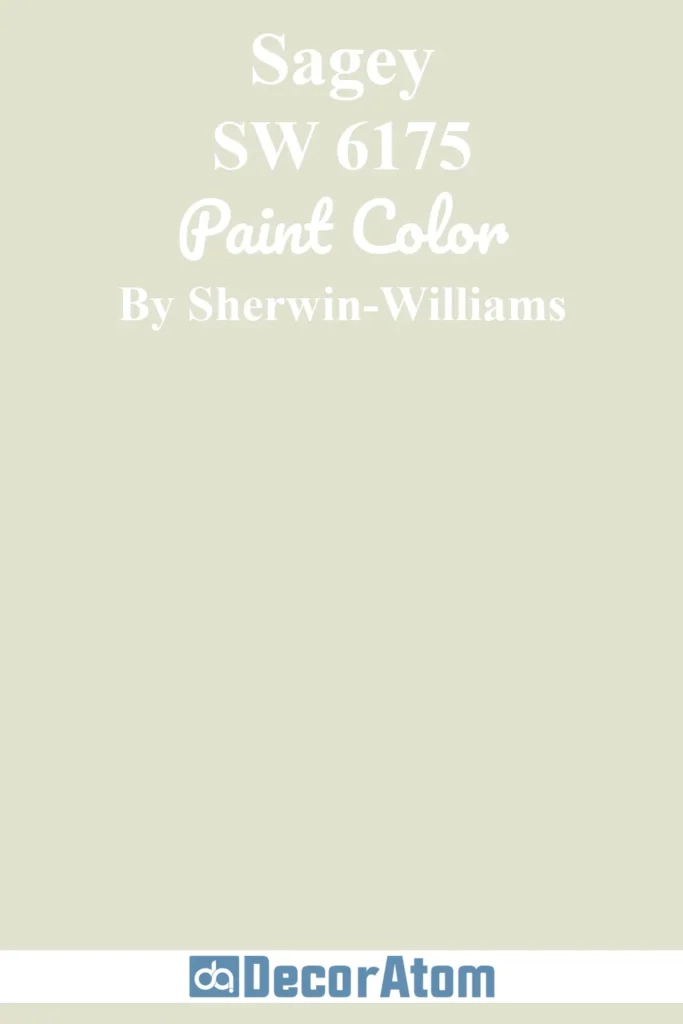
Sagey is exactly what it sounds like—a classic, medium sage green that stays true to that timeless herbal tone.
It has just enough gray to keep it grounded and sophisticated, but it doesn’t lose that unmistakable green character.
With an LRV of 41, it fits right in that mid-tone comfort zone that works well in most spaces.
This color is approachable, cozy, and very easy to live with. It doesn’t try to be trendy or edgy—it just feels balanced and natural.
Sagey is a great choice for someone who wants a true sage green that feels familiar but still fresh. It works well with warm wood tones, soft whites, and other earthy hues.
15. Sensible Hue
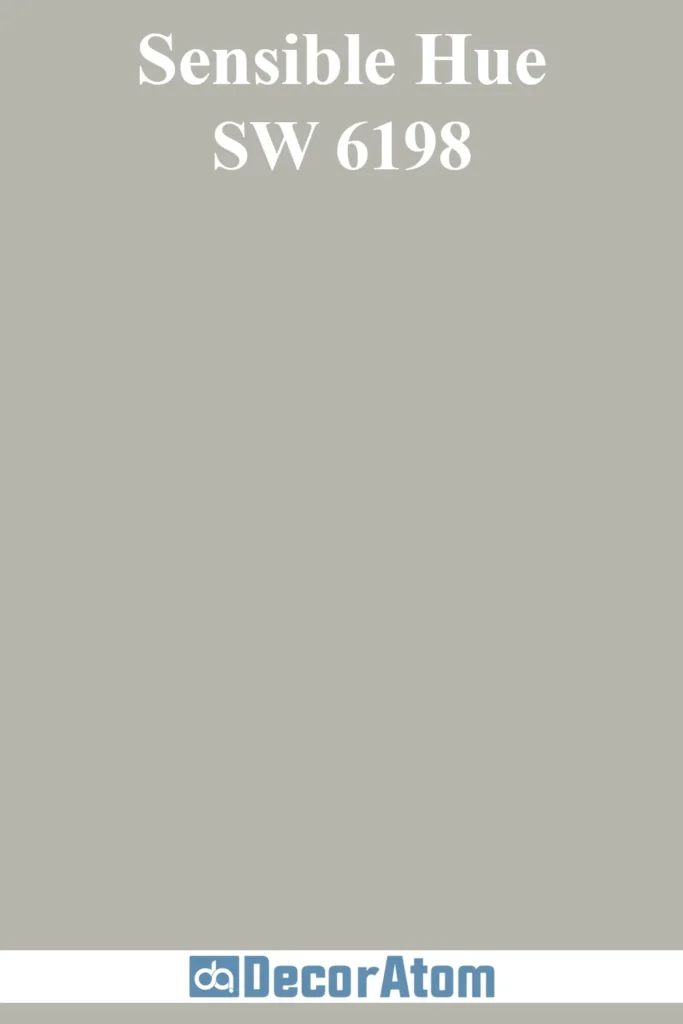
Sensible Hue is a soft green with cool gray undertones, giving it a misty, almost silvery appearance in some lights.
It’s subtle but elegant, and its slightly cool edge gives it a more modern feel than some of the warmer sages on this list.
With an LRV of 46, it sits in the middle and offers good balance—light enough to feel fresh, but grounded enough to hold its own.
This color really shines in transitional spaces—think hallways, staircases, or open-concept living areas where you want something that quietly ties everything together.
Sensible Hue is one of those colors that plays well with others. It can sit next to taupes, creams, blues, or deeper greens and still hold its own.
16. Green Earth

Green Earth feels like a walk through a shady garden—it’s soft, organic, and just a little bit earthy.
This sage green has more warmth than some of the cooler tones on this list, with faint beige undertones that give it a sun-washed, lived-in look.
Its LRV is 29, so it’s a bit deeper and more saturated, which helps it add a layer of richness to the space.
What makes Green Earth so appealing is how connected it feels to nature.
It has a timeless quality that feels rooted and calm—perfect for anyone wanting to bring a touch of the outdoors in.
This color works especially well in dens, dining rooms, or even exterior shutters.
17. At Ease Soldier

At Ease Soldier has one of the most unique names on this list, and it suits the color perfectly. It’s a relaxed, warm green with a khaki-like vibe.
There’s a definite softness to it, thanks to the muted gray and beige undertones, and it brings a casual, effortless elegance wherever it goes.
Its LRV sits at 34, giving it enough depth without going too dark.
I love this color in spaces where you want a relaxed but polished atmosphere.
It pairs wonderfully with off-whites, warm woods, and even brass fixtures for a vintage-modern combo.

